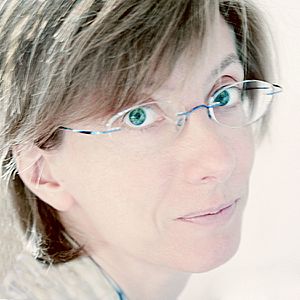Sophie Lacaze facts for kids
Sophie Lacaze is a French composer who creates amazing music. She was born on September 9, 1963. Her music is known for being unique and often connects with nature and ancient traditions.
Contents
About Sophie Lacaze
Early Life and Music Studies
Sophie Lacaze was born in a town called Lourdes, France. She loved music from a young age and studied at the Conservatoire de Toulouse, which is a special school for music. She then went to the Ecole Normale de Musique de Paris and won a prize for her compositions.
She continued to learn from many famous composers like Allain Gaussin, Philippe Manoury, and Antoine Tisné in France. She also studied with Franco Donatoni and Ennio Morricone in Italy. She even explored music theatre with Georges Aperghis and took classes with Pierre Boulez. In 2002, she was invited to work with electronic music at a university in Australia.
After traveling to different countries, Sophie Lacaze returned to France in 2006.
Awards and Achievements
Sophie Lacaze has received several important awards for her music.
- In 2009, she was the first woman to win the Grand Prix Lycéen des Compositeurs in France. This is a special award chosen by high school students!
- In 2010, she received the Claude Arrieu Prize from SACEM, a French music organization, for all her musical works.
- In 2012, she was recognized by the Beaumarchais-SACD association.
- Most recently, in 2023, Sophie Lacaze won the ‘100 femmes de culture’ award. This award celebrates inspiring and creative French-speaking women in the arts.
Her Music and Style
Sophie Lacaze writes many different types of music. She composes for solo instruments, small groups of instruments (called chamber music), and even large orchestras. She has also written three operas and pieces that use recorded sounds.
Her music is performed in over 20 countries by famous groups like the BBC Symphony Orchestra and the Orchestre Philharmonique de Radio France.
Sophie Lacaze has a special way of creating music. She wants her music to bring back old traditions like rituals, chants, and dances. She also loves to connect music with nature. The actual sound of the music is very important to her.
Sophie Lacaze as a Champion of Music
Sophie Lacaze is not just a composer; she also works hard to support classical and modern music.
- She started and directed the Printemps Musical d'Annecy, a festival that included different art forms and focused on new music.
- She then directed the Turbulences Sonores Festival in Montpellier.
- Since September 2018, she has been the director of the Musiques Démesurées festival in Clermont-Ferrand.
In March 2013, Sophie Lacaze and pianist Nathalie Négro started an association called Plurielles 34. This group supports women composers in France. Sophie was the president of this association until September 2020.
She also taught music composition and history at the Université Paul Valéry in Montpellier for twelve years, sharing her knowledge with new generations of musicians.
Selected Works
Sophie Lacaze has composed many pieces over the years. Her works include:
- Music for solo instruments like the flute or piano.
- Pieces for small groups, such as string trios or quartets.
- Larger works for orchestras.
- Operas, which are plays set to music.
- Music that combines live instruments with recorded sounds.
Some of her notable works include Voyelles (for flute, inspired by a poem), Broken Words (for flute and string trio), and Voices of Australia (for solo flute and recorded voices). She has also composed works like Dreaming, a chamber opera, and Les quatre elements, a concerto for flute, children's choir, and percussion. Her more recent works include Vers les étoiles (for piano) and Sighs of stars (for orchestra).
Discography
Sophie Lacaze's music has been released on many albums, allowing people all over the world to listen to her compositions. These recordings feature various musicians and ensembles performing her unique pieces. Some of her albums include "Noûs" (2024), "En songe" (2024), and "Il pleut des voix de femmes" (2023). Earlier recordings like "Sophie Lacaze - Works with flutes" (2008) showcase her pieces written for flutes.


